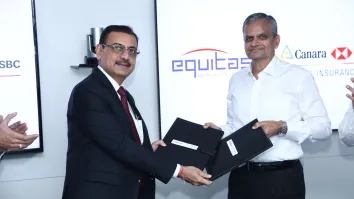
Thai central bank’s digital payments on ‘top of the world’
The Bank of Thailand is eyeing to expand connectivity with more countries.
Thailand's central bank has laid the groundwork not just to address pain points in its payment system but also to construct a borderless digital mechanism.
“We’re quite proud to have linked Thailand with Singapore, the two fast payment systems back in 2021,” Pariwat Kanithasen, deputy director of the Bank of Thailand (BOT), told attendees of the 2024 Asian Banking & Finance Forum held at Shangri-La Bangkok on 23 April.
Key to this initiative is Thailand’s national payment infrastructure PromptPay, Kanithasen said, which is now connected to eight payment systems in other countries and jurisdictions — one of the biggest number of connections for any country in the world.
PromptPay is also a participant to Project Nexus, where the BOT is working together with the central banks of Singapore, Malaysia, Indonesia, and the Philippines, along with the Bank of International Settlements to create a “multilateral rail” for payments and bank transfers.
“Right now we have eight [partners]. This is top in the world. No country has reached the number eight like Thailand has,” Kanithasen said, adding that Thai citizens using PromptPay “don’t have to care where the merchant is banking at.”
In Thailand alone, there are over 9 million acceptance points for PromptPay.
ALSO READ: Thailand’s central bank announces new senior appointments
Standardised, simplified
Kanithasen highlighted the BOT’s efforts to simplify the system, particularly peer-to-peer (P2P) and peer-to-merchant (P2M) transfers. For example, for P2P transfers, BOT uses only proxies such as mobile phones or ID numbers. For merchants, BOT is standardising the QR code.
Adoption has risen: BOT now records an average of 538 transactions per person and per year, and $1.47m (THB54m) in transactions per day.
For 2023, BOT recorded TH47t worth of transactions — equal to 2.6% of the country’s GDP.
“We have over 74 million registered IDs. So we are a country of 70 million people. This is like more than Thailand’s population,” he added.
Outages
Kanithasen also named challenges faced by Thailand’s payments network, highlighting capacity outages as a key concern.
BOT has noted how there were outages in the system during paydays — during the beginning and end of the month — and recognised that these are the days when economic activities through payments are at their peak.
“What has happened recently is that sometimes you get outages, not just from banks, but the operators as well. So, as a regulator, we have to take care that such system upgrades have to be taken constantly,” he said.
For operators who suffer frequent outages, BOT has opted to “name and shame” them. This has helped them improve performance in avoiding the IT outages, according to Kanithasen.
“The second worrisome challenge is of course fraud, and this does not only affect Thailand but it’s a global issue. Our reports from the police indicate over a quarter of a million reported frauds a year,” he said.
ALSO READ: Thai banks’ credit costs rise as tech difficulties, bad loans pile up
Most of these reports were due to identity theft and phishing. Noting these, the BOT is now championing use cases for biometrics and machine learning to detect fraud.
The most important, however, does not involve hacking the system but involves the consumers themselves, according to Kanithasen.
“It’s identity theft, financial education, and raising consumer awareness. [The] most important thing that we as a regulator would need to do, along with the industry, is educating the general public on fraud and raising awareness,” he said.
For the future, apart from linking with more jurisdictions, Thailand has set their eyes on its citizens who are still not in the system.
Kanithasen connected the standardised Thai QR code as a means to drive up financial inclusion.
“These would be microworkers, for instance, who are able to pay and who are able to transfer money from Singapore to Thailand cheaply. THese are tourists who don’t have credit cards when they go abroad. They rely on cash for instance, but now they can use the QR codes [to pay] merchants,” he said.

















 Advertise
Advertise










